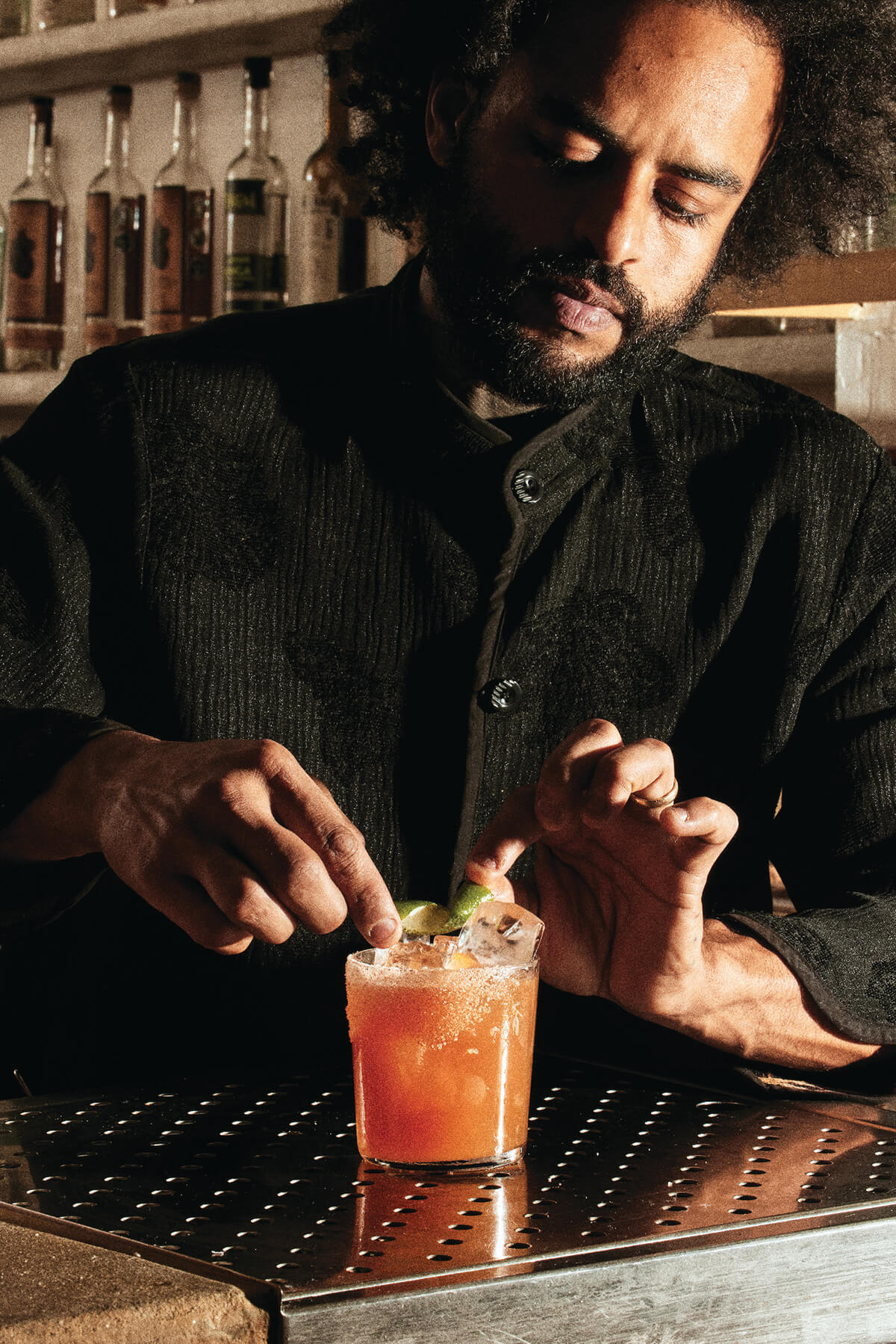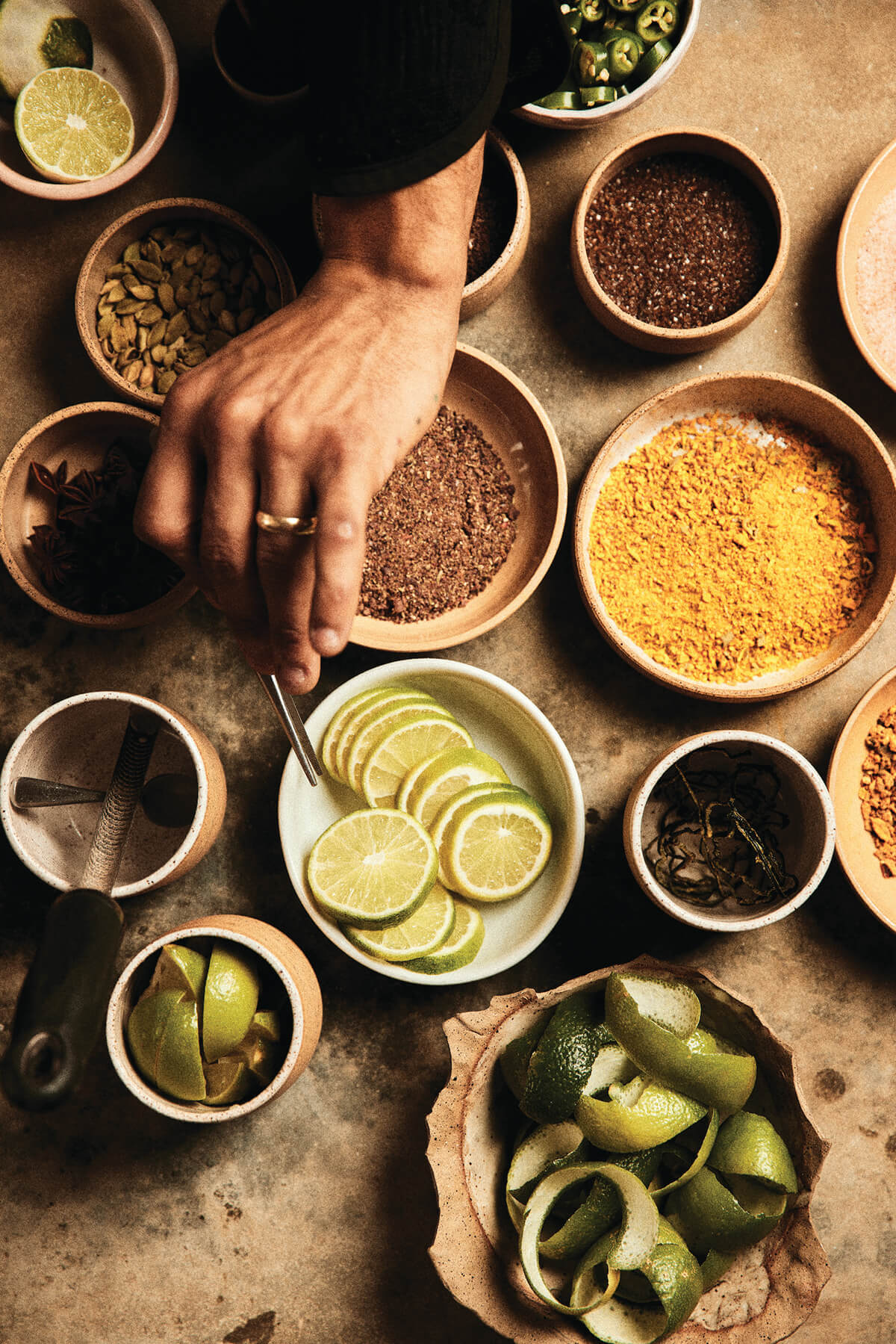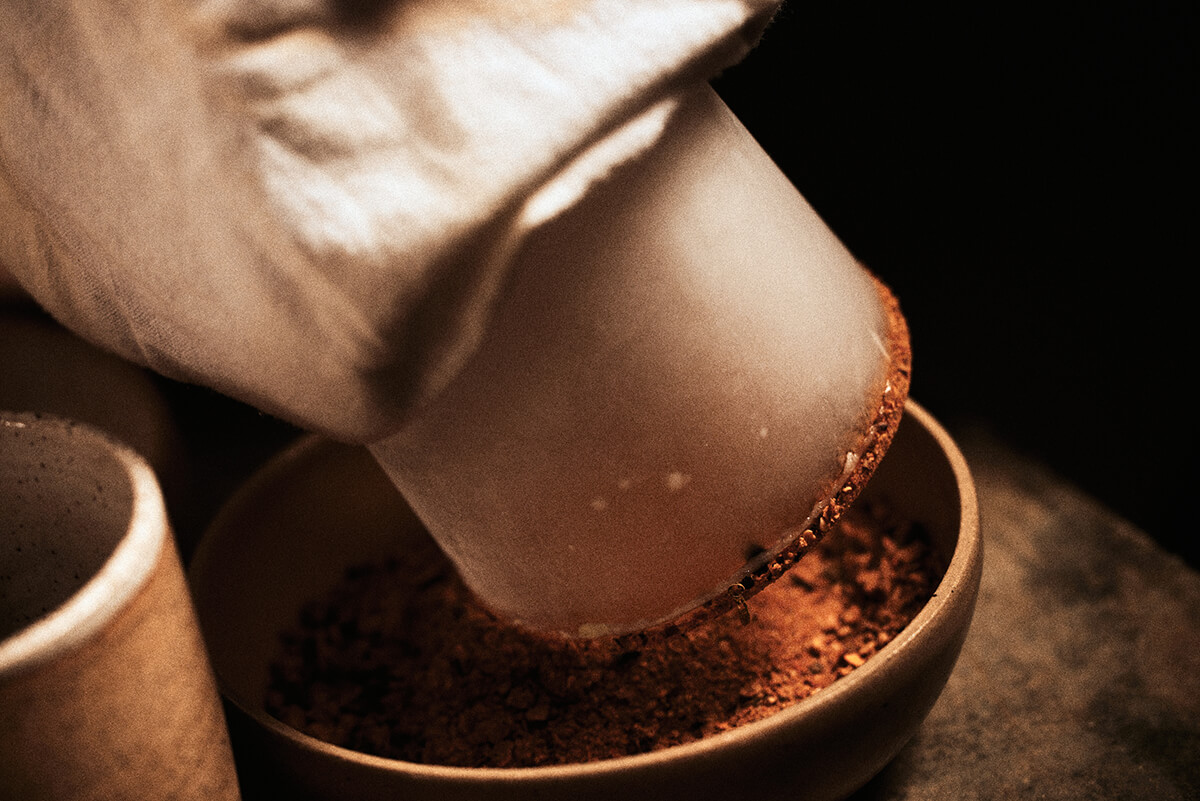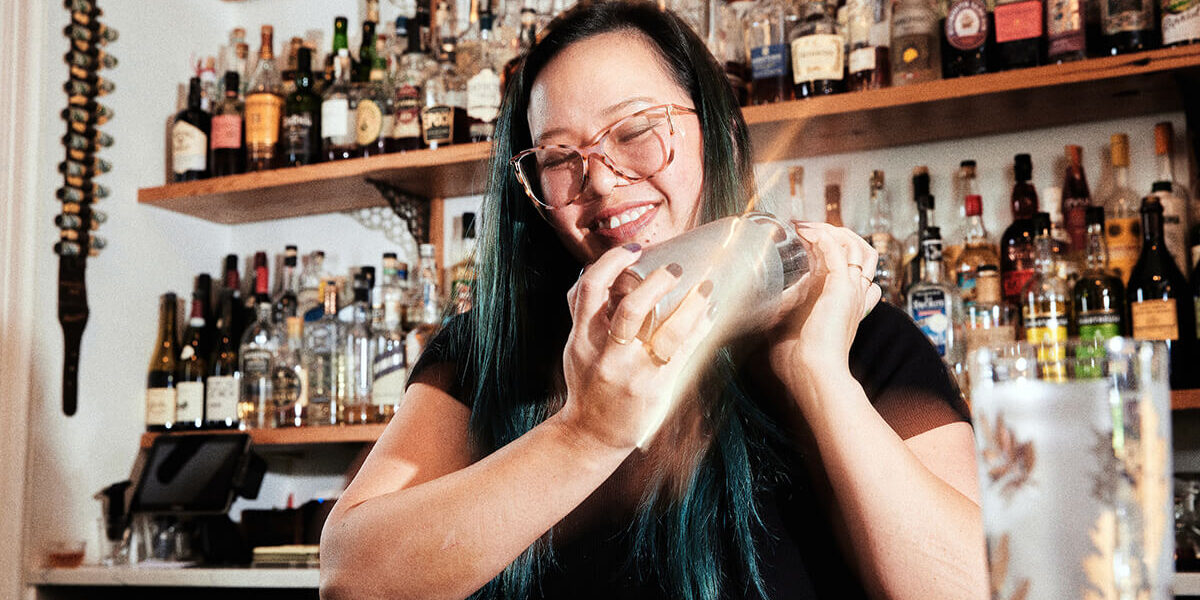Food & Drink
Six Baltimore Bartenders Who Turn Cocktail-Making Into an Art Form
The dawn of the craft cocktail era has attracted those with creative and even scientific minds to the profession.
From behind their bars, they’ve seen it all. Blossoming love affairs and breakups. Fights and reconciliations. Joy and despair. They’ve served as amateur psychoanalysts, sounding boards for business ideas, and the voice of reason—some people need to be told when it’s time to go home While many people become bartenders for practical reasons—the flexible hours, the wide availability of jobs—others find the profession a calling.
“It takes a very special human to be in hospitality,” says Amie Ward, president of the Baltimore Bartenders’ Guild. “We enjoy putting other people’s needs before our own. We are creative in our solutions. We can empathize, actively listen to people. There’s nothing easy about that at all.”
Bartending has changed dramatically in the last decade. The dawn of the craft cocktail era has attracted those with creative and even scientific minds to the profession. The ability to make drinks using liquors and ingredients from around the world is finally treated with the respect it deserves by restaurateurs, customers, and critics alike. Although getting the perfect head on a beer is an art unto itself, engineering a cocktail using sous vide shochu with coconut, cantaloupe juice, yogurt fat-washed soju, and egg white, as Gabe Valladares can do at CookHouse, is something different entirely.
In Baltimore, designer cocktail bars like Rye, W.C. Harlan, The Coral Wig, Southpaw, Dutch Courage, and Kenwood Tavern peacefully coexist with beer bars and corner pubs. They are all important parts of our city’s social fabric, as are the people who work at them.
There are more than 610,000 bartenders nationwide, according to the U.S. Bureau of Labor Statitics. We’re lucky to have some of the best of them right here in Baltimore.
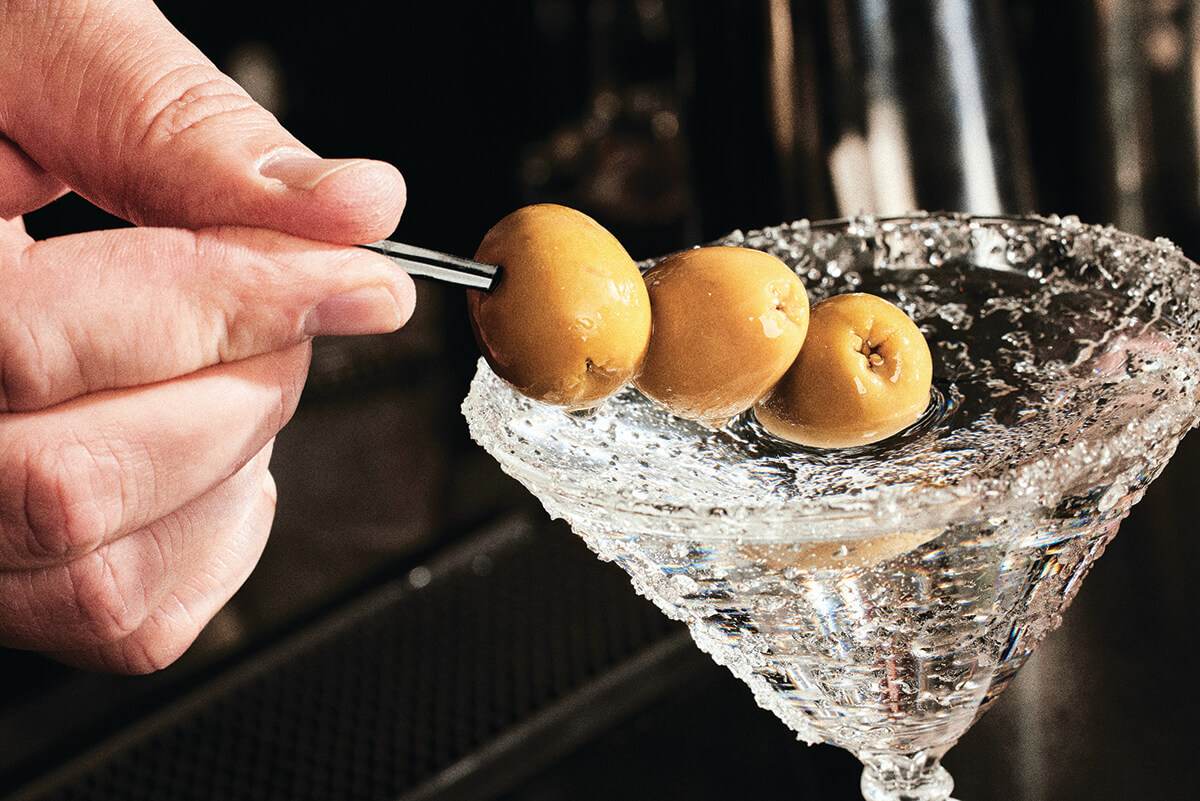
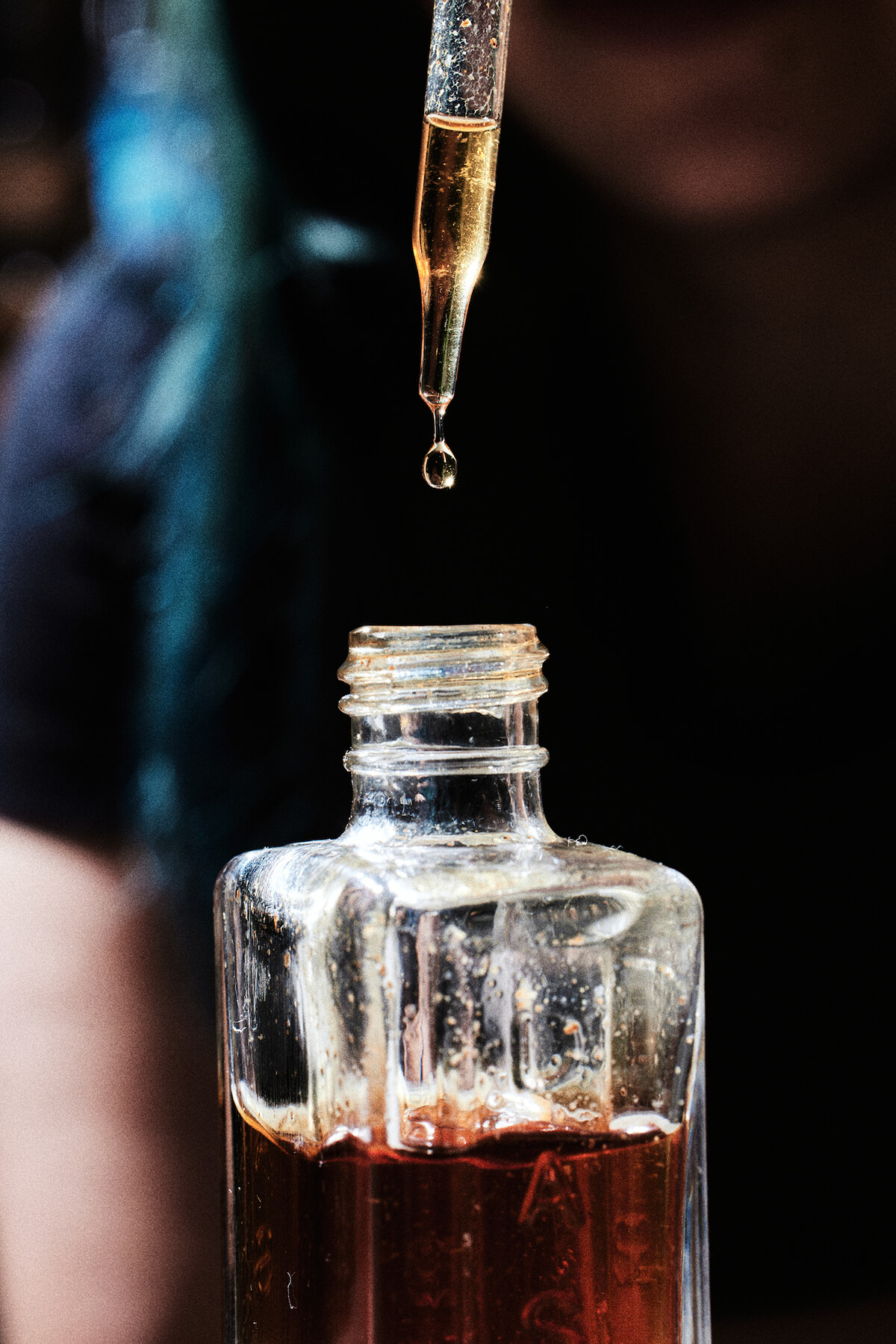
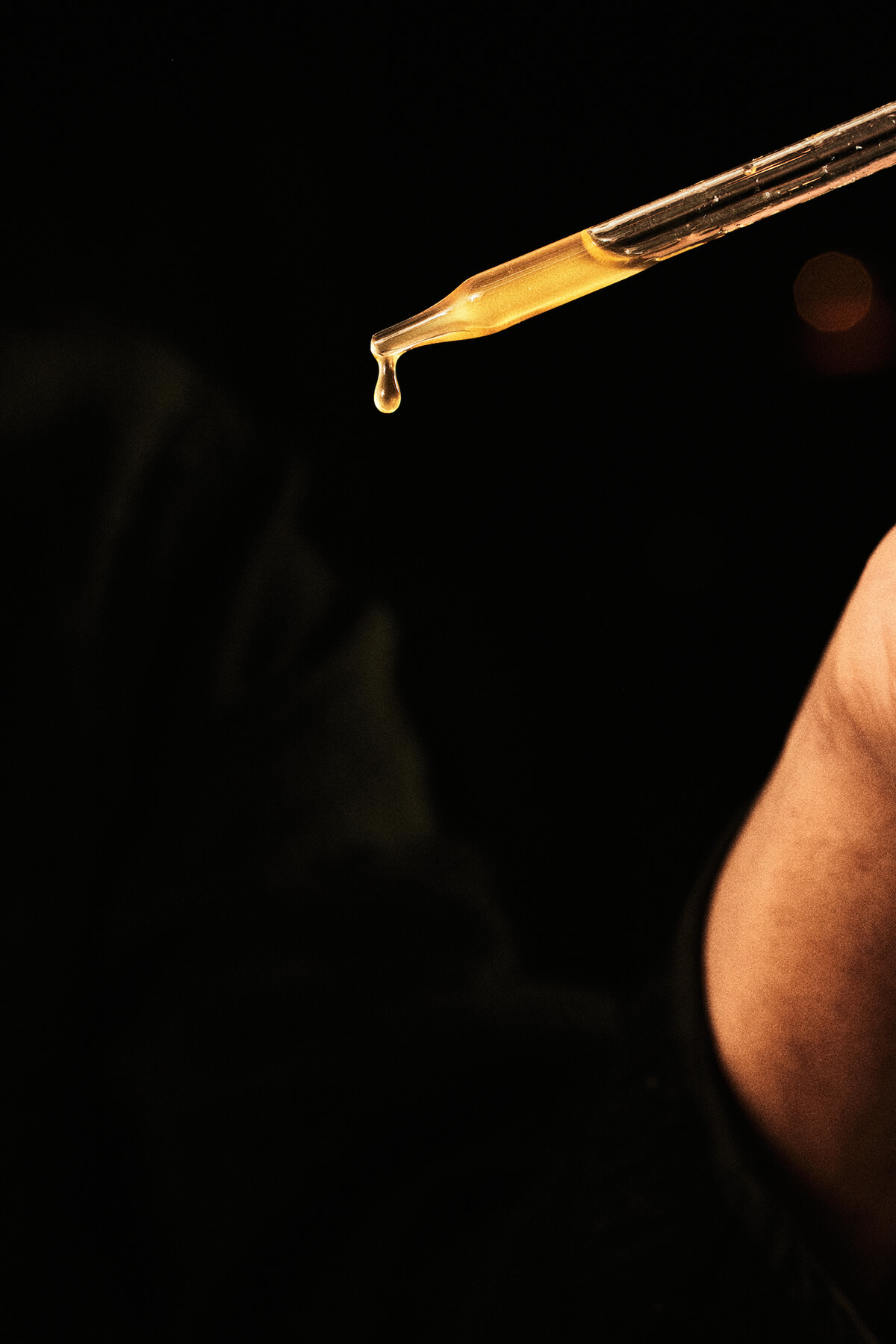
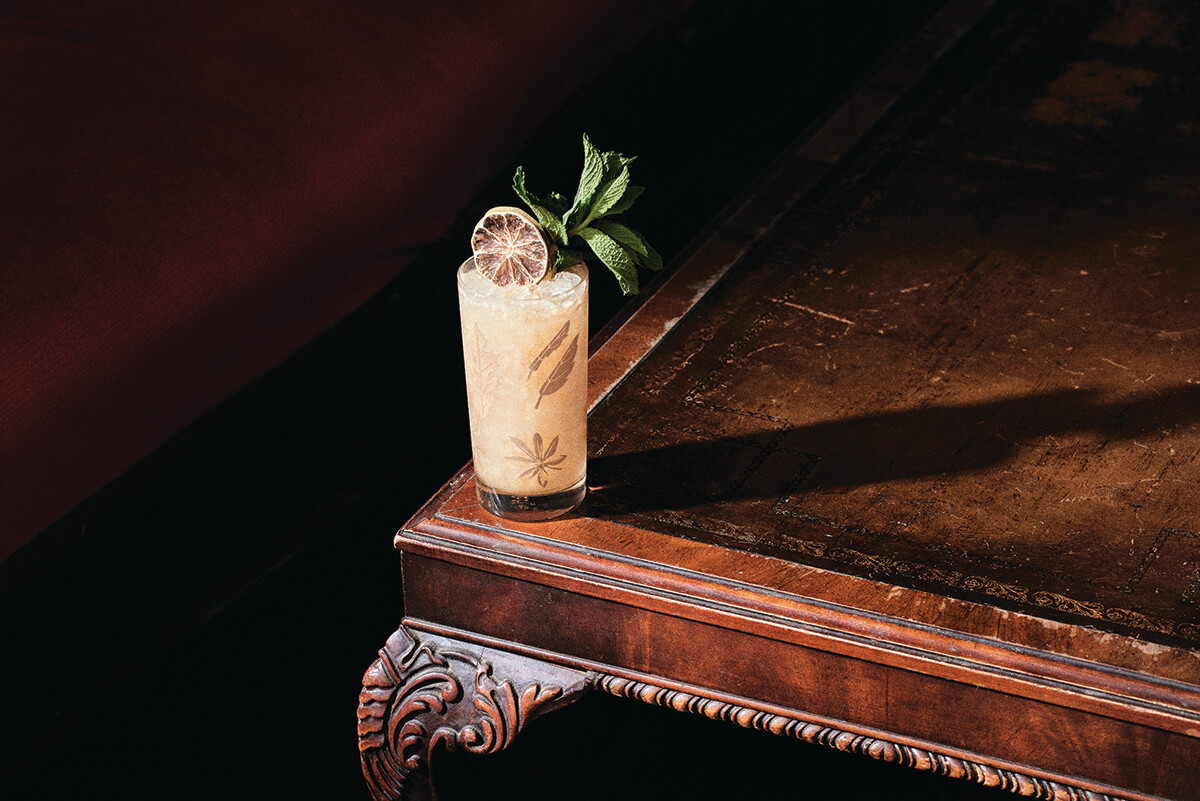
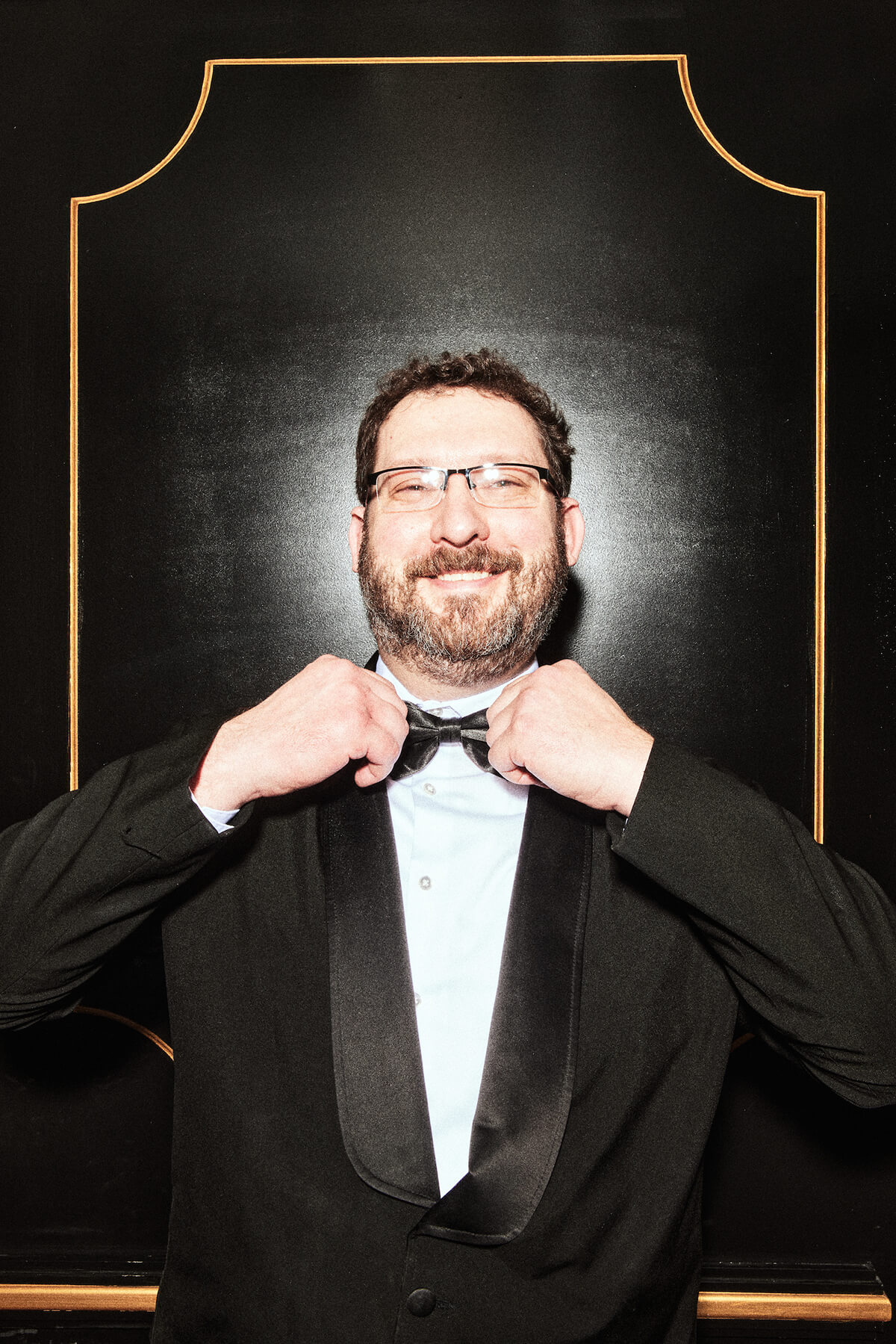
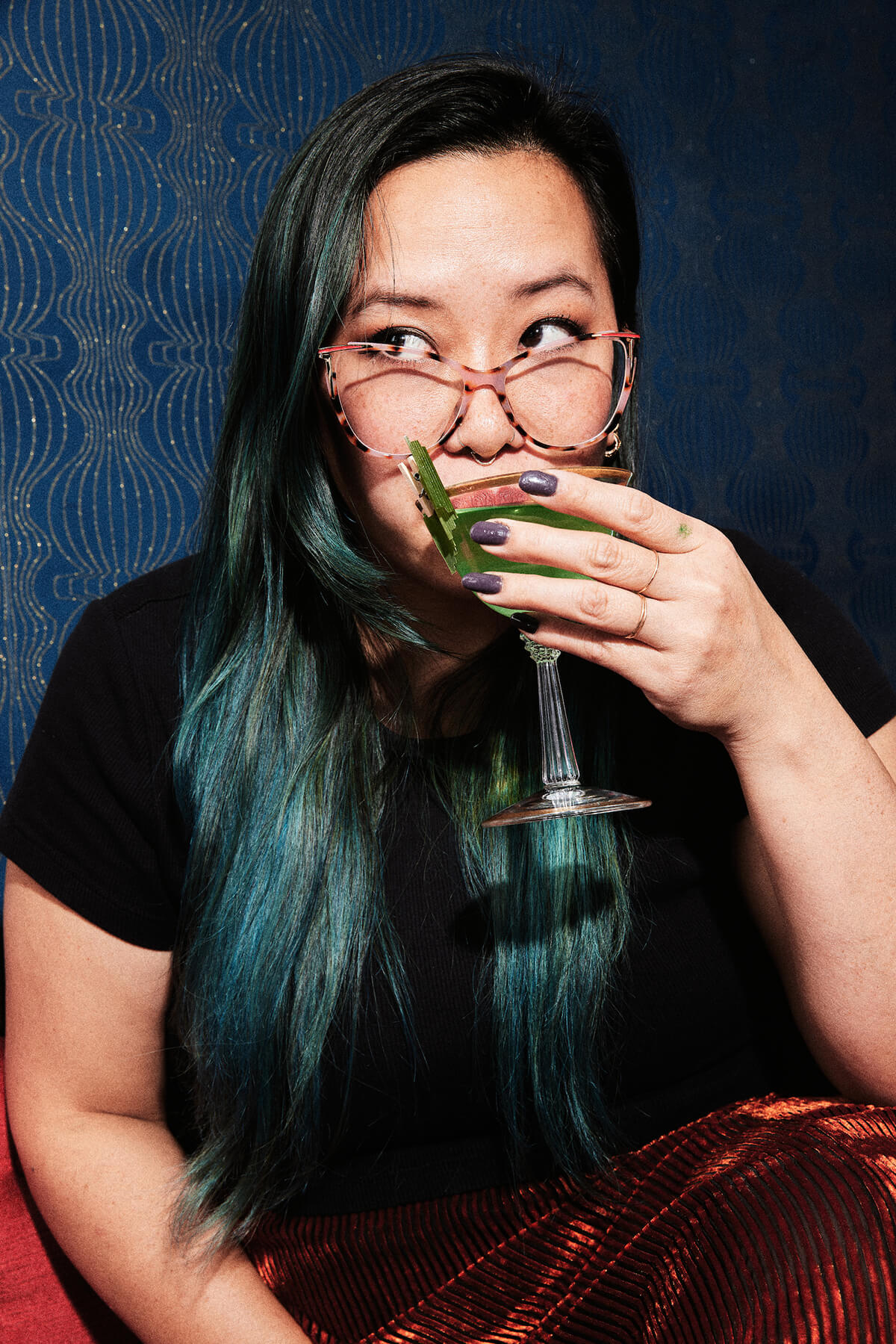
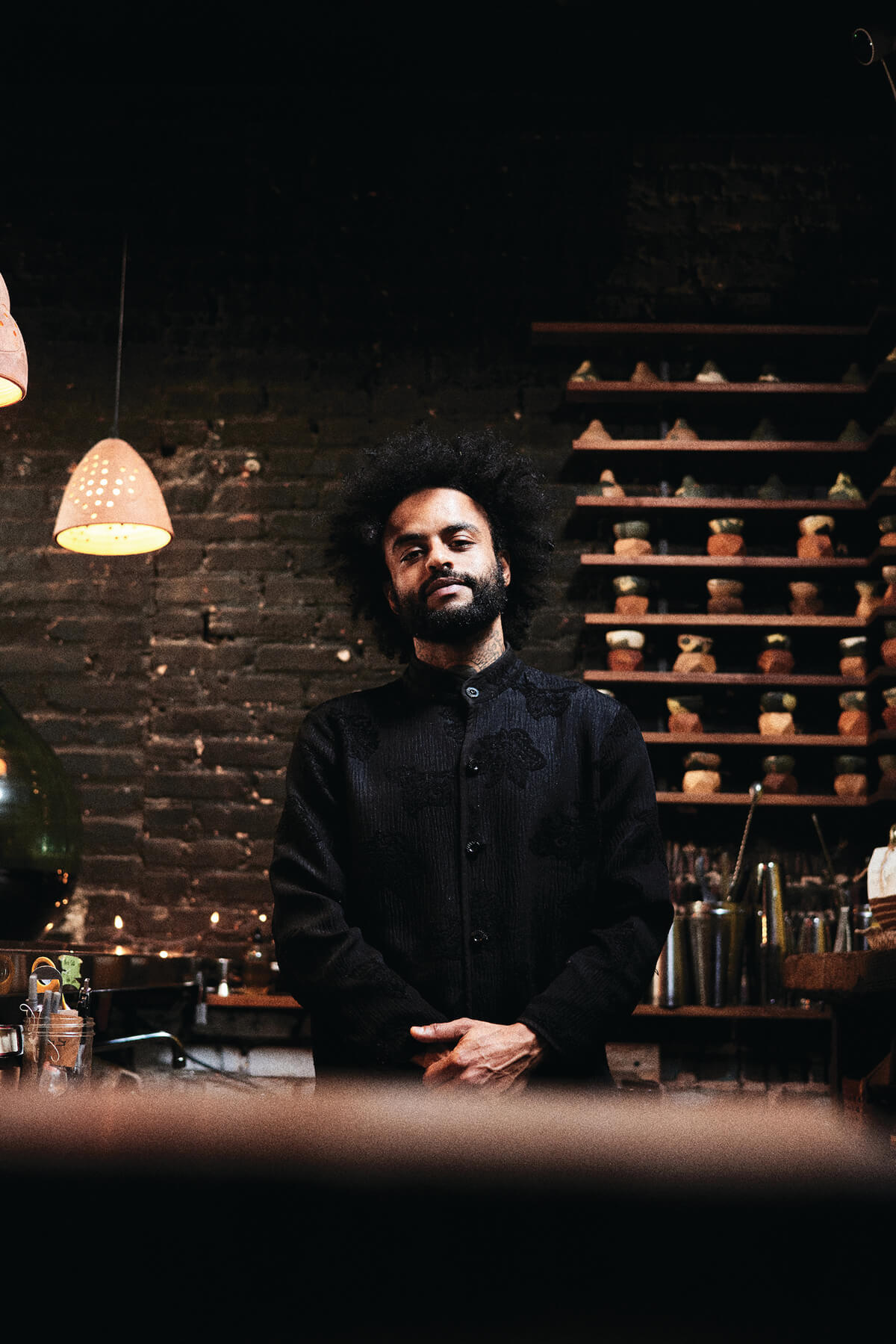
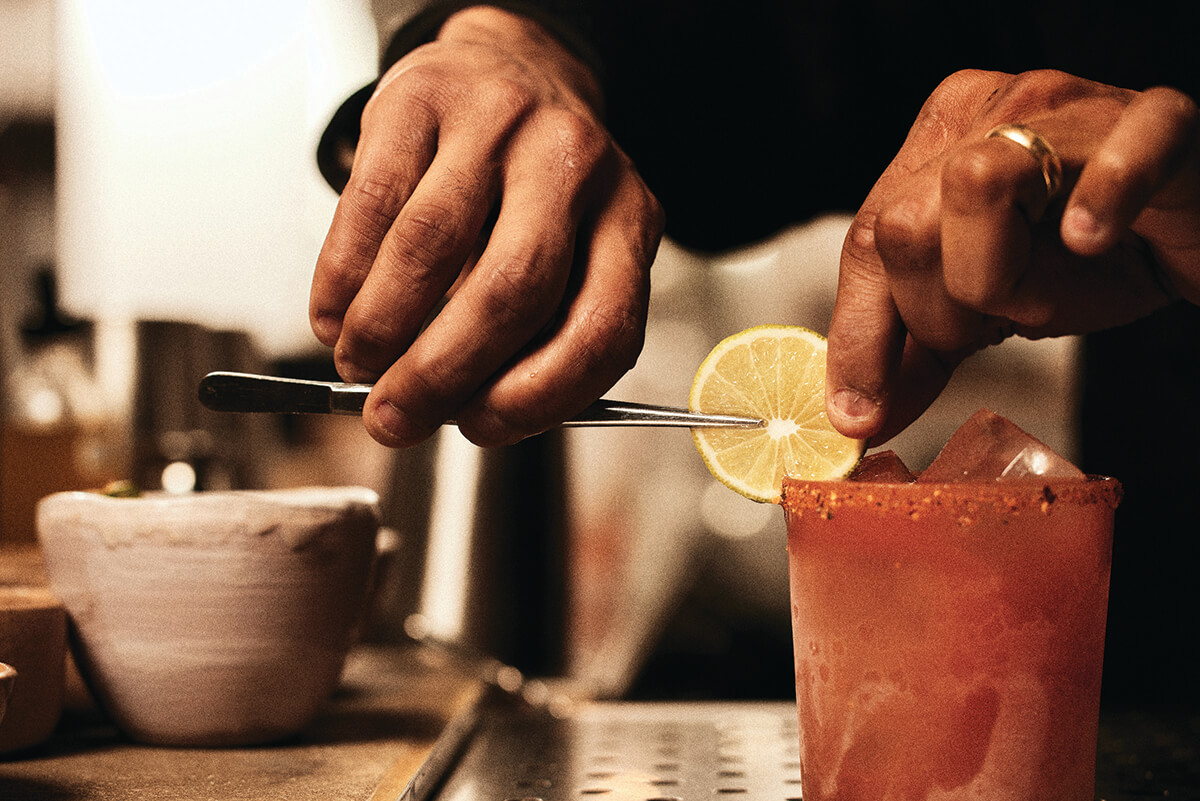
Gabriel Valladares
Saturday nights at 10 p.m., Bolton Hill’s CookHouse transforms from one of the best restaurants in the city to one of the best cocktail bars…anywhere. The man responsible for this metamorphosis, Gabriel Valladares, is just 25 years old, but to sample one of his drinks is to taste the work of a wunderkind.
During the weekly three-hour sessions (and of course during CookHouse’s regular dinner service), the self-taught Valladares’ creativity is evident in every sip. Each cocktail on the menu is a Gabe original.
Take for example The Cilantro. Valladares, CookHouse’s bar director, is a lover of mezcal, and he had begun to experiment with sous viding liquor.
“Mezcal is Mexican, and I wondered what else was in that realm,” he says. “Cilantro popped into my head, so I sous vided cilantro, a little bit of honey, and mezcal for eight hours. My friend Lane [Harlan of Clavel and W.C. Harlan] inspired me to do my own tepache, which is basically fermented pineapple juice.”
But Valladares wasn’t done. To garnish the drink, he added little pellets cleverly dubbed “lime caviar” on the menu. They’re made by combining sugary lime juice and the chemicals sodium alginate and calcium lactate, an idea he read about in a book published by The Aviary, the cutting-edge cocktail bar in Chicago. When the pellets pop in the drinker’s mouth, they add a kick of acidity to the smoky drink.
“It was a one-and-done thing that came together really well,” Valladares says of the concoction. But that’s not the norm. The ability to accept failure, he says, is a key component to being a successful mixologist.
“I’ve done so many cocktails that literally taste disgusting. They never make it onto the menu. Not everyone is going to like everything you do. That can hurt my ego. But putting your creative aspects [forward] brings people in.”
Judging by the crowds that flock to CookHouse, Valladares’ wins far outpace his losses. A former student at Maryland Institute College of Art, he’s also an avid photographer, and his beautiful shots of the restaurant’s food and drink routinely wow people on Instagram.
“I love when new people come into the bar,” he says. “My goal every night is to blow their minds and give them an amazing experience.”
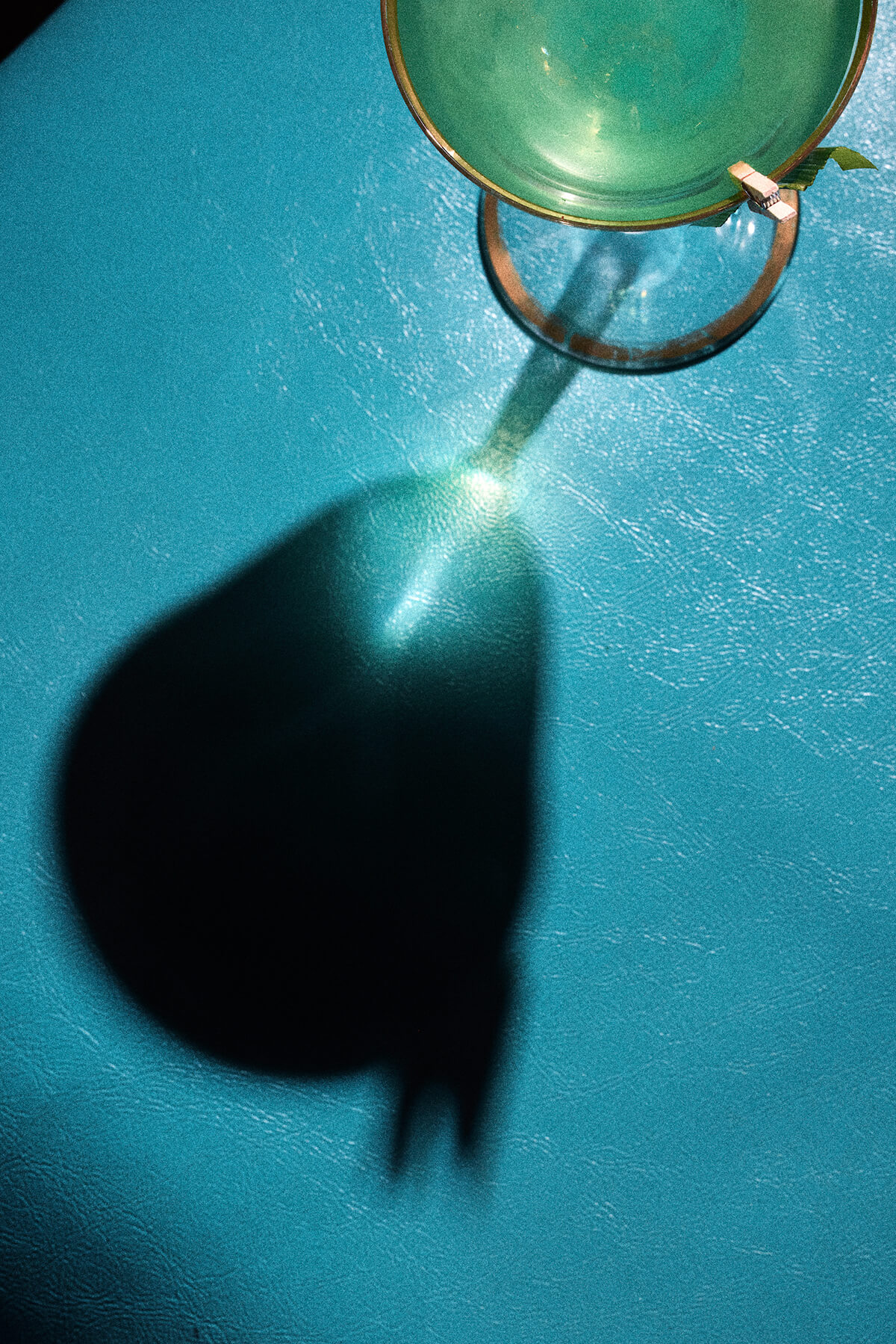
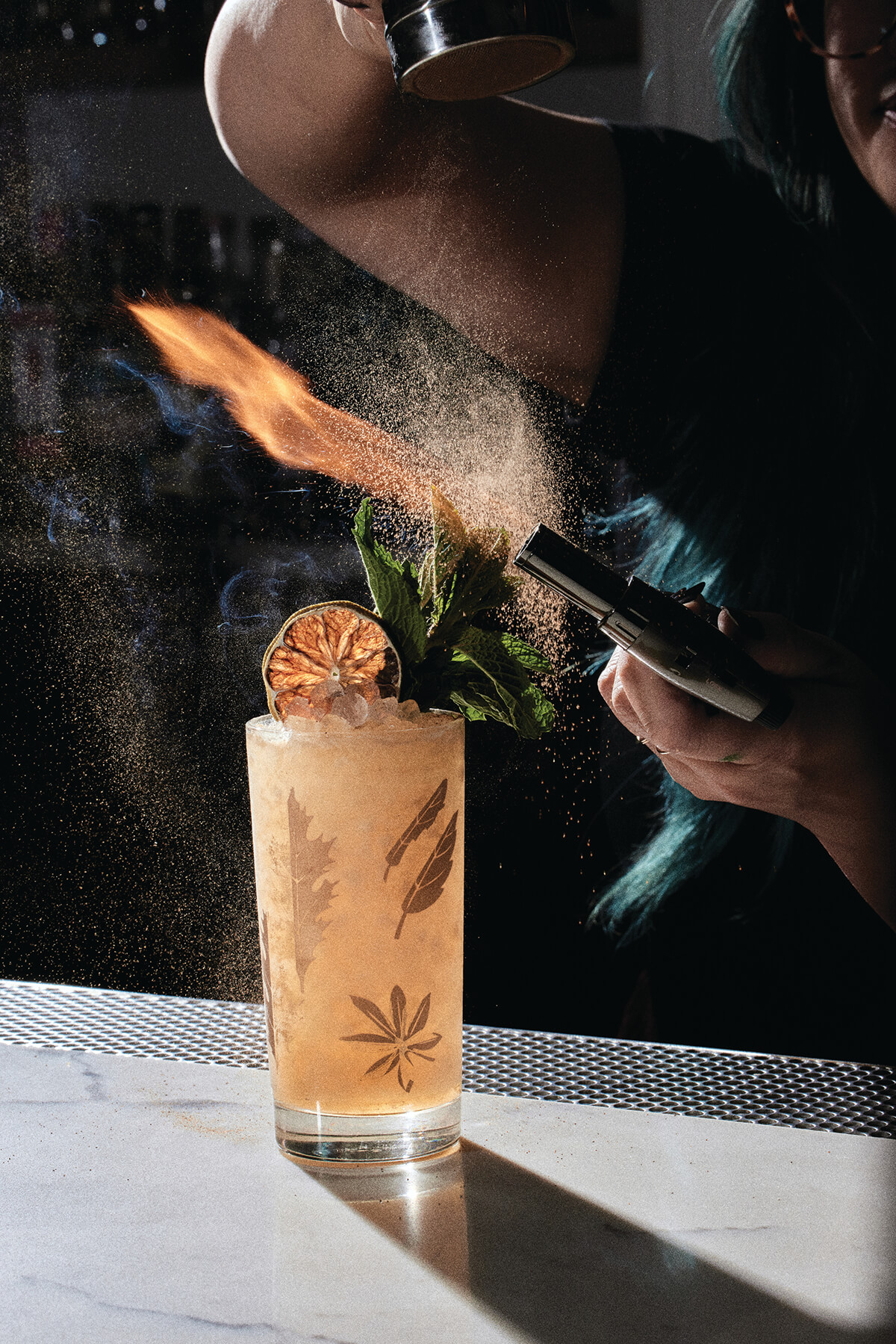
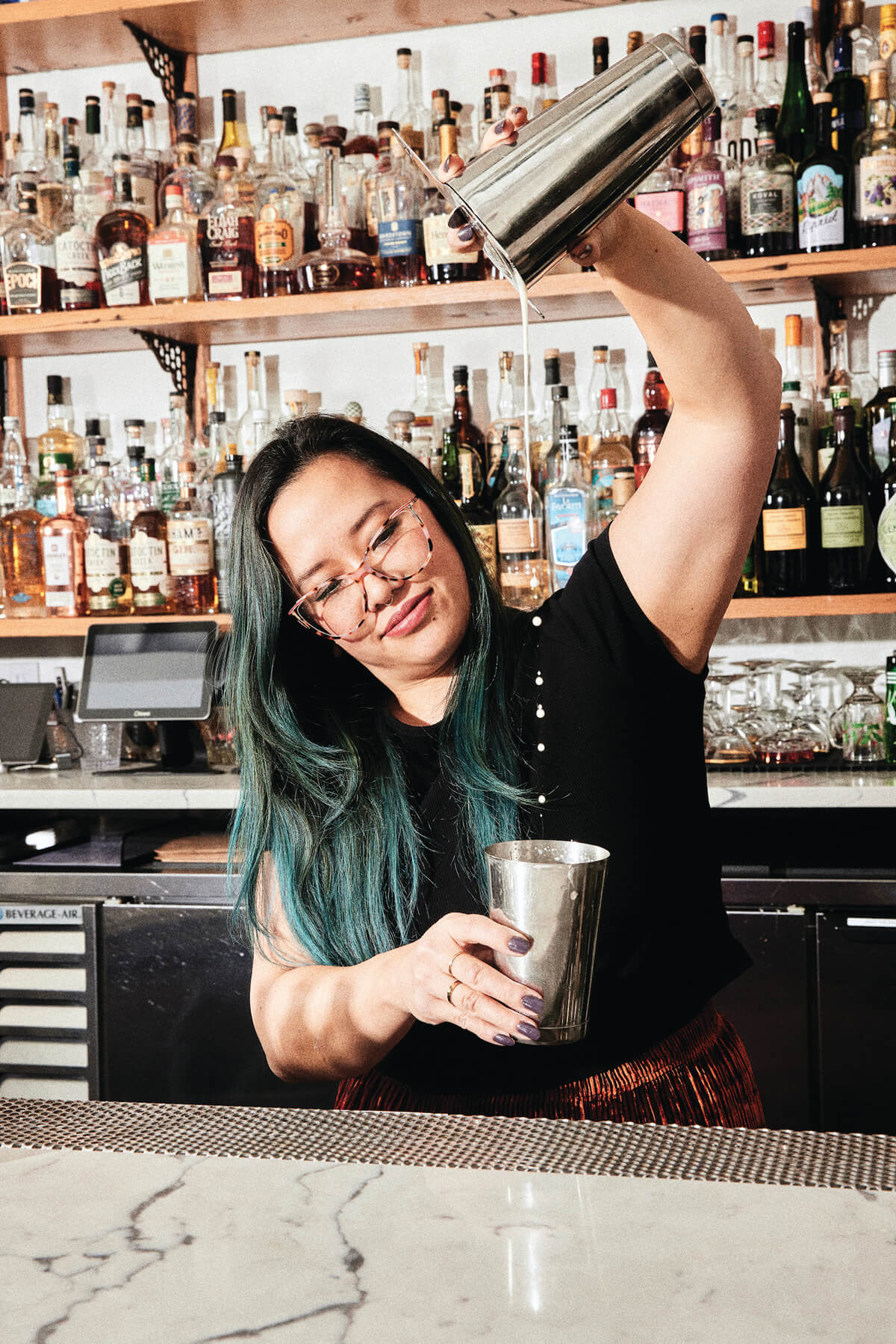
Kim Vo
Kim Vo sees potential ingredients for cocktails everywhere. Over the summer, she challenged herself to begin making drinks with zero waste. This she took quite literally. Vo used corn as the backbone for the drink she calls La Cosecha, which means “harvest” in Spanish. Not only did she juice the kernels, but she turned the cob and all of the husk into a stock.
“When you put them together you get the most powerful corn flavor,” she says.
From there she added mezcal and basil to the stock. Next, she put in a little watermelon. She even pickled the rinds for garnish so they too did not go to waste.
In November, Vo tapped into her Vietnamese roots to create the Snug Bug, her take on a Hot Toddy inspired by artichoke tea. She made a tincture using the artichoke heart and charred the leaves. Then she added carciofo, which is an artichoke-based amaro, and mixed in a cane sugar spirit, plum liqueur, and reduced cider syrup.
“It gets wild,” she says. “It’s toasty. It’s earthy. It’s just perfect for the season.”
The drink demonstrates the scientific way that Vo’s brain works. She earned a bachelor’s degree in neuroscience from Johns Hopkins University but gravitated toward the hospitality industry because she treasures the interpersonal relationships.
“Ultimately what I love about cocktail bartending is the connection with people, both the guests and other people in the industry,” she says.
After stints at hotel bars and the late, great whiskey-focused bar Bookmaker’s in Federal Hill, she’s been the bar manager at Dutch Courage in Old Goucher for three years. During her time in the industry, she’s seen the world of upscale cocktails change dramatically.
“Cocktailing was [once] kind of like a very exclusive practice,” she says. “You had to go to a speakeasy or a craft cocktail bar to find a good cocktail. But post-COVID, with Instagram and that whole boom with social media, it’s more accessible.”
She believes that the culture she has helped to create among the staff has contributed to Dutch Courage’s welcoming spirit.
“It’s a completely supportive environment, and it really lends itself to this uninhibited creativity,” says Vo, 33. “The owners are super supportive, and we have a very, very tight staff. And I think, honestly, our guests have the most fun because we’re all very happy.”
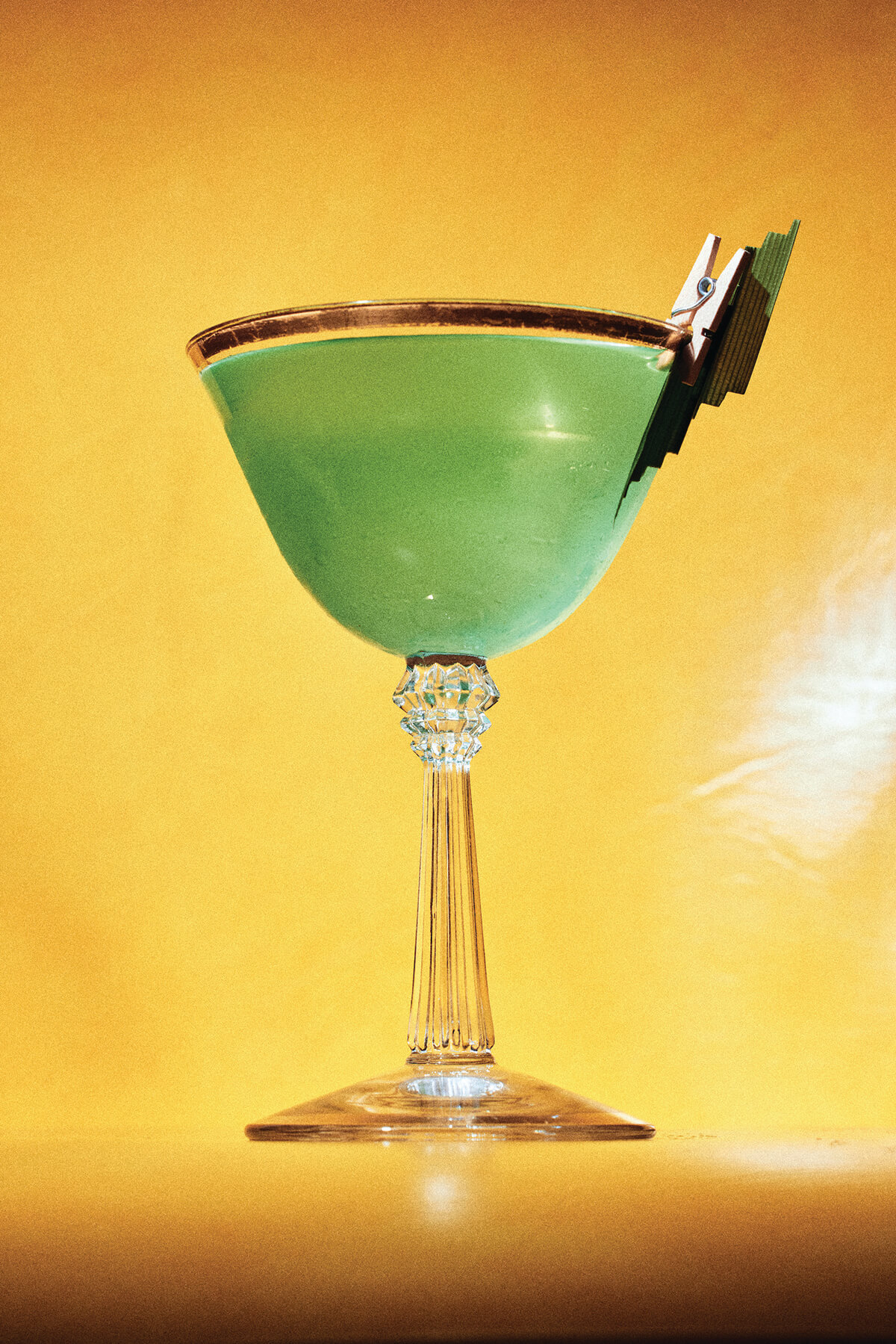
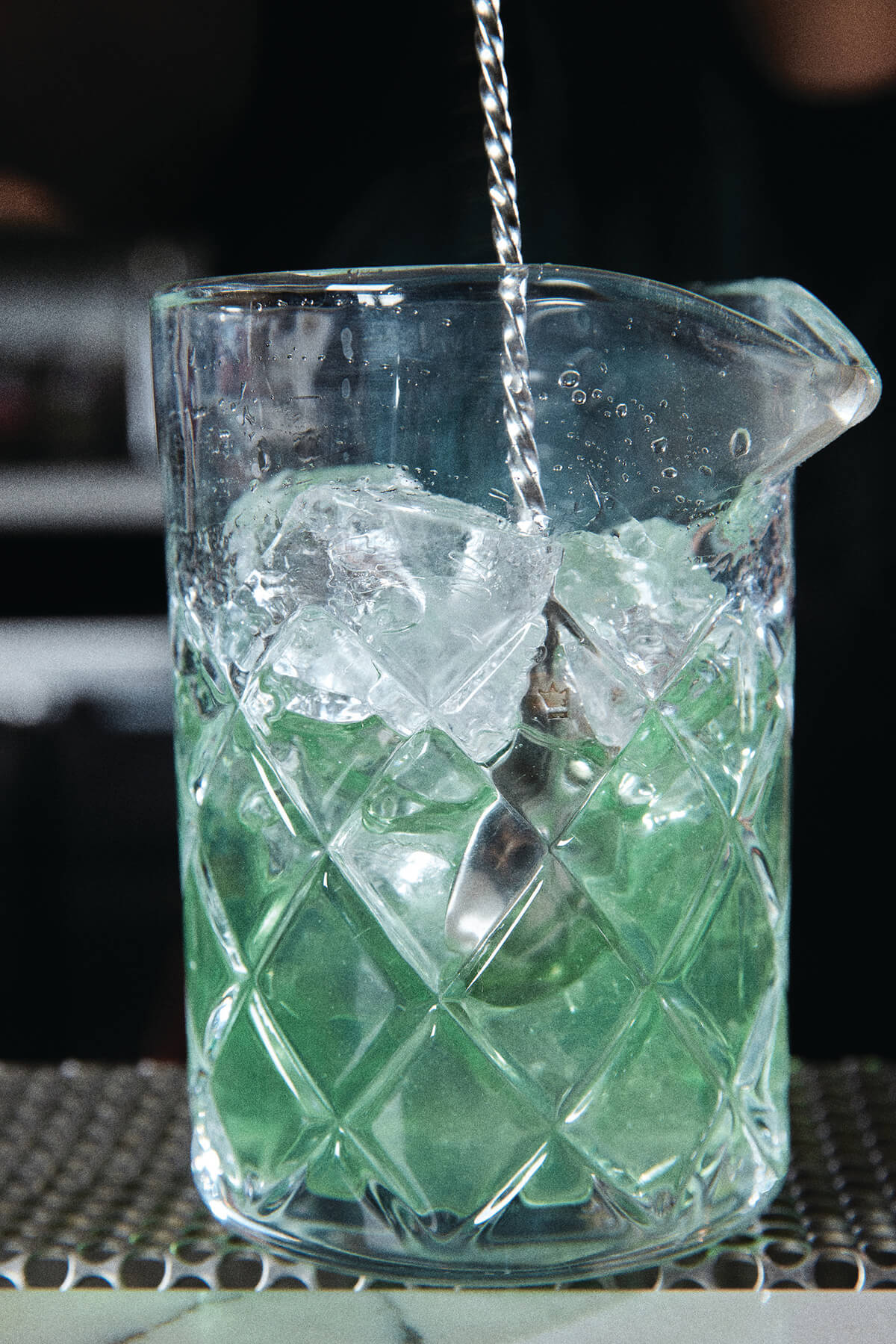
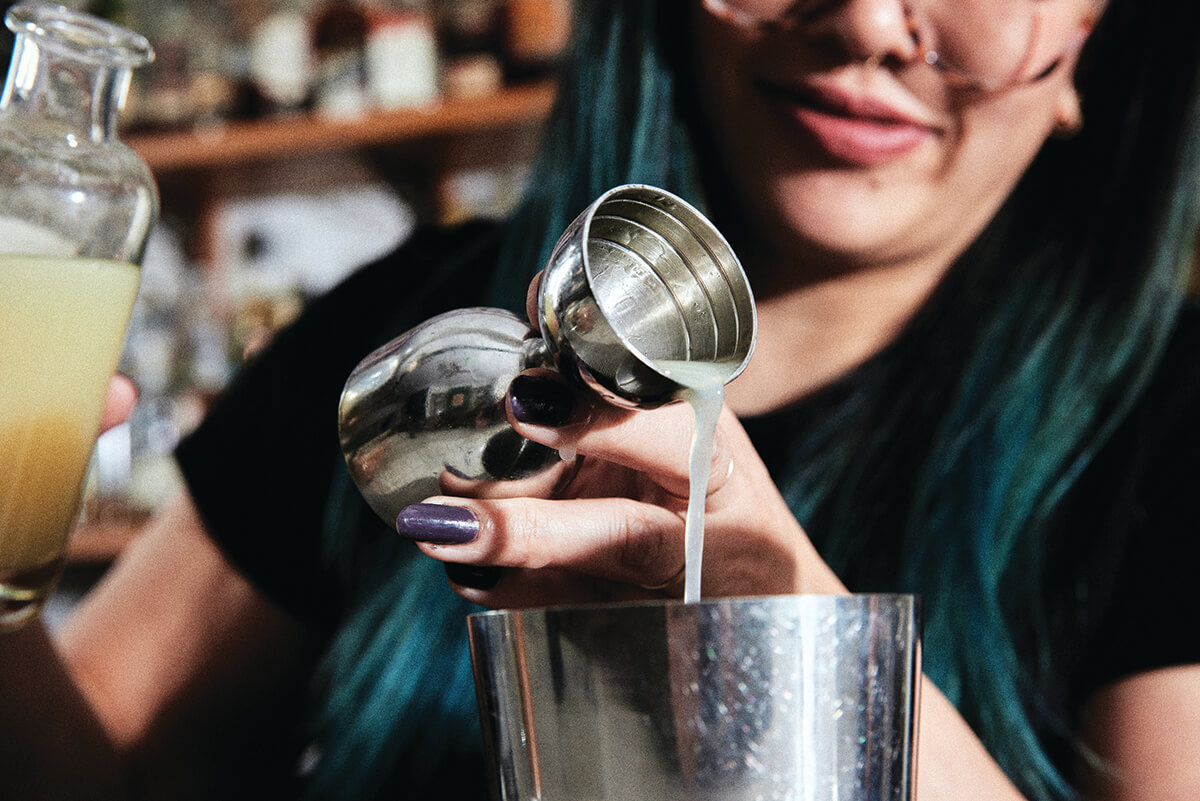
Charlie Vascellaro
There’s no mystery as to why people enjoy going to the tequila-centric speakeasy Clandestino in Belvedere or, for that matter, any of the other establishments where Charlie Vascellaro has worked over the course of his 20 years behind the bar.
He knows how to throw a party.
“I’ve always felt like, being the bartender, you are the host of the party, which I’ve had plenty of experience doing at home over the years,” he says. “I was always the kind of guy who hosted the parties, and everybody would come to my house, and I would make the drinks for them. When I first started tending bar and I was worried about my relative lack of experience, I used to coach myself and say, ‘Just make them like you make it at home.’”
That policy has served him well. At Clandestino, which he manages and helped open in 2022, he specializes in preparing cocktails with a Southwestern flair.
Vascellaro, 59, who spent much of his childhood in Arizona, originally started bartending because he liked the hours. They allow him the freedom and flexibility to pursue his other passion: writing about baseball. His work has appeared in The Baltimore Banner, Baltimore Fishbowl, and New York’s Village Voice, for which he writes about “the Mets and all of their travails.”
Each year during spring training he returns to Arizona, where he curates museum exhibits about baseball (one on the history of Japanese-American baseball history eventually made its way to Dodger Stadium in Los Angeles) and organizes baseball-themed trips for groups of senior citizens. The groups of 35 to 40 people take in games at the spring training homes of the Chicago Cubs and San Francisco Giants, listen to guest speakers, visit museums, and eat all their meals together. It’s intense, Vascellaro says, but his bartending skills often come in handy.
“You’re kind of a public speaker as a bartender,” he says. “You’re a public persona. So if people have anxiety about public speaking, bartending can get you over that. And I think you’re also a peacemaker. You’re creating an atmosphere. I think the skills that you learn as a bartender definitely cross over in real-life situations quite often.”
There’s another perk of bartending, he says, that works out well for his hybrid career.
“I pick up a lot of writing assignments behind the bar, too. Editors, publishers, come into the bar and I get introduced to them not only as the bartender, but as a guy who does some writing. And before you know it, I’m working for people who were my customers at the bar before. It’s perfect.”
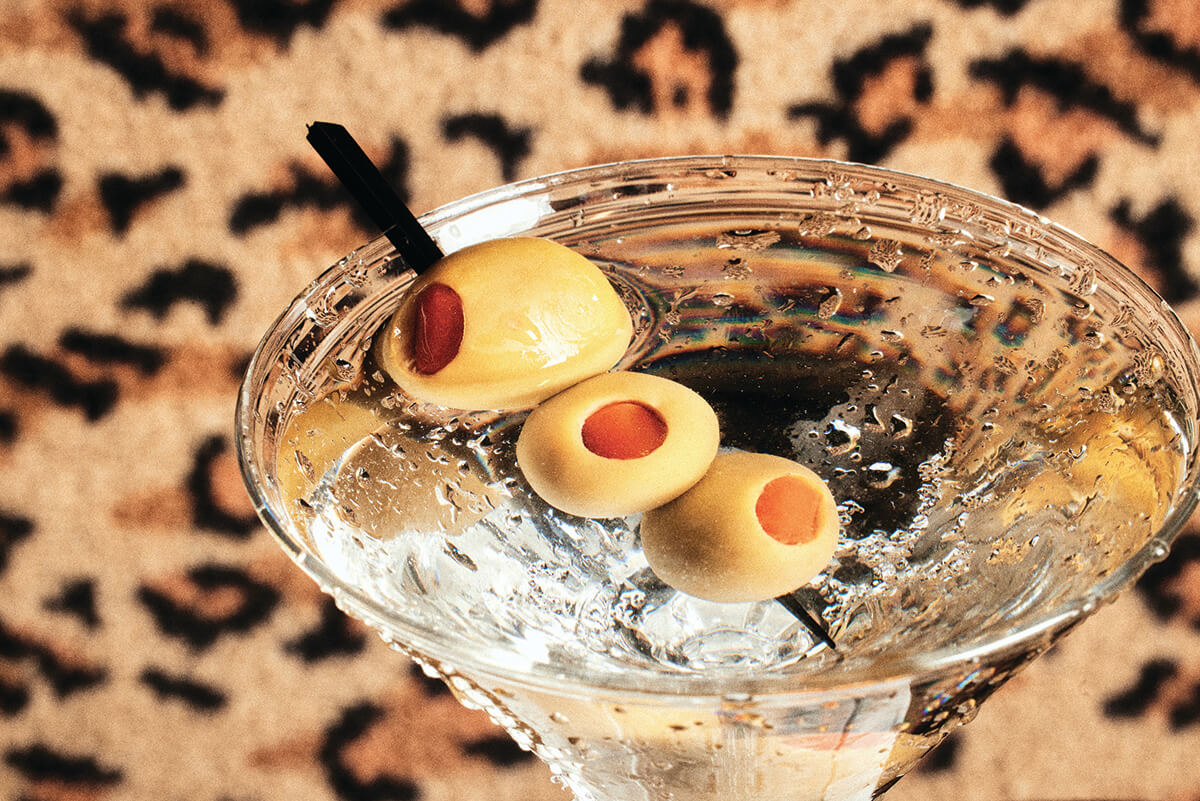
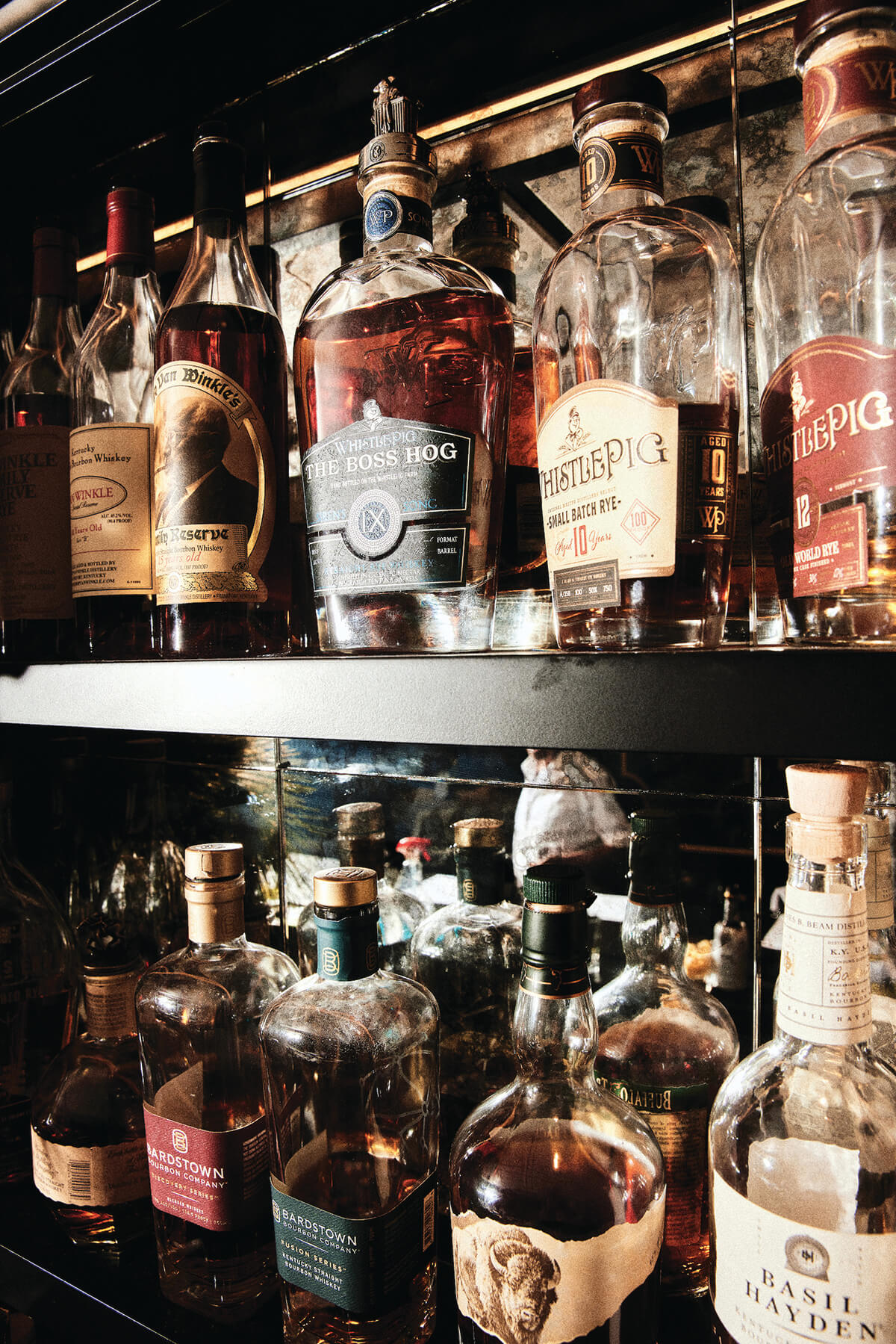
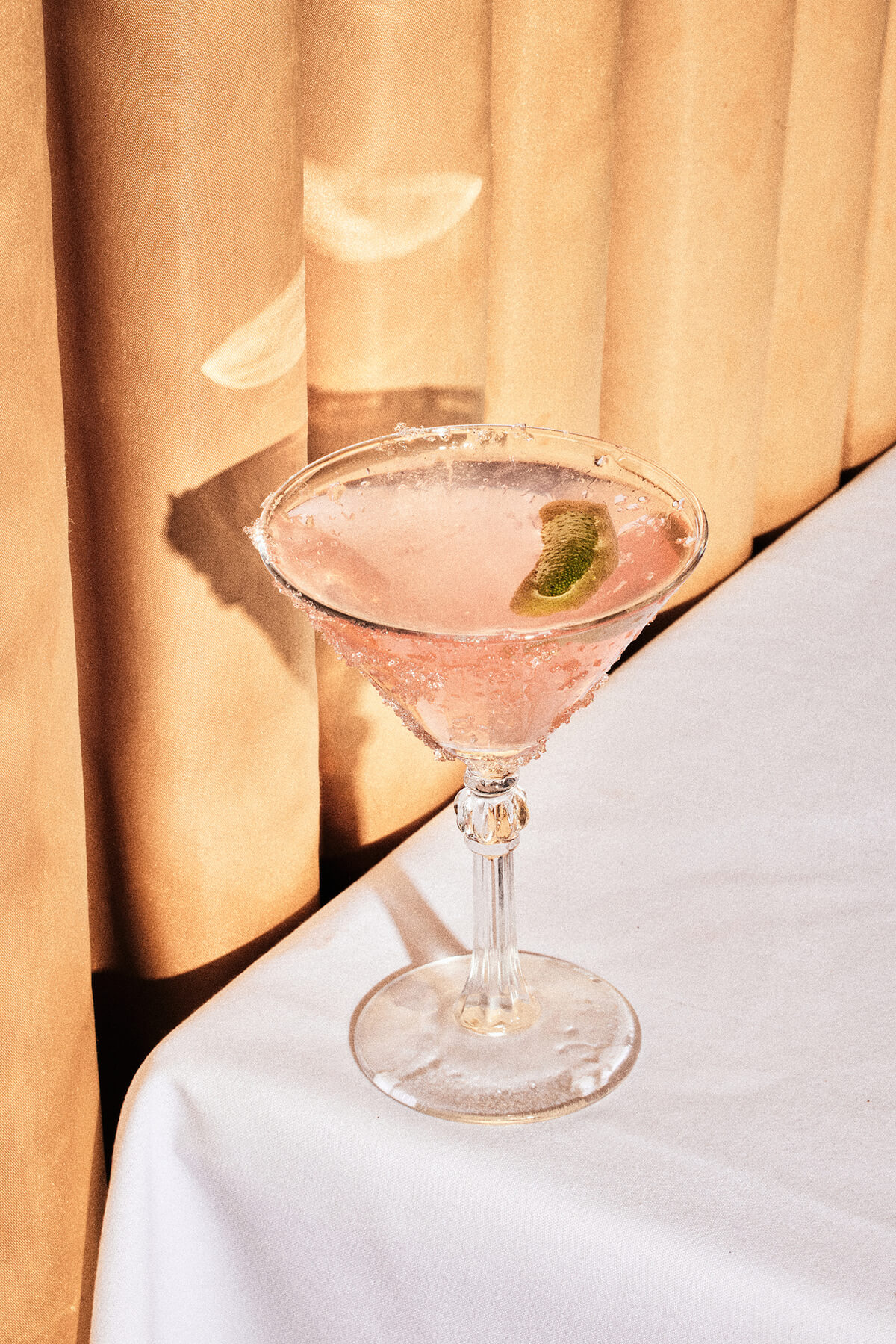
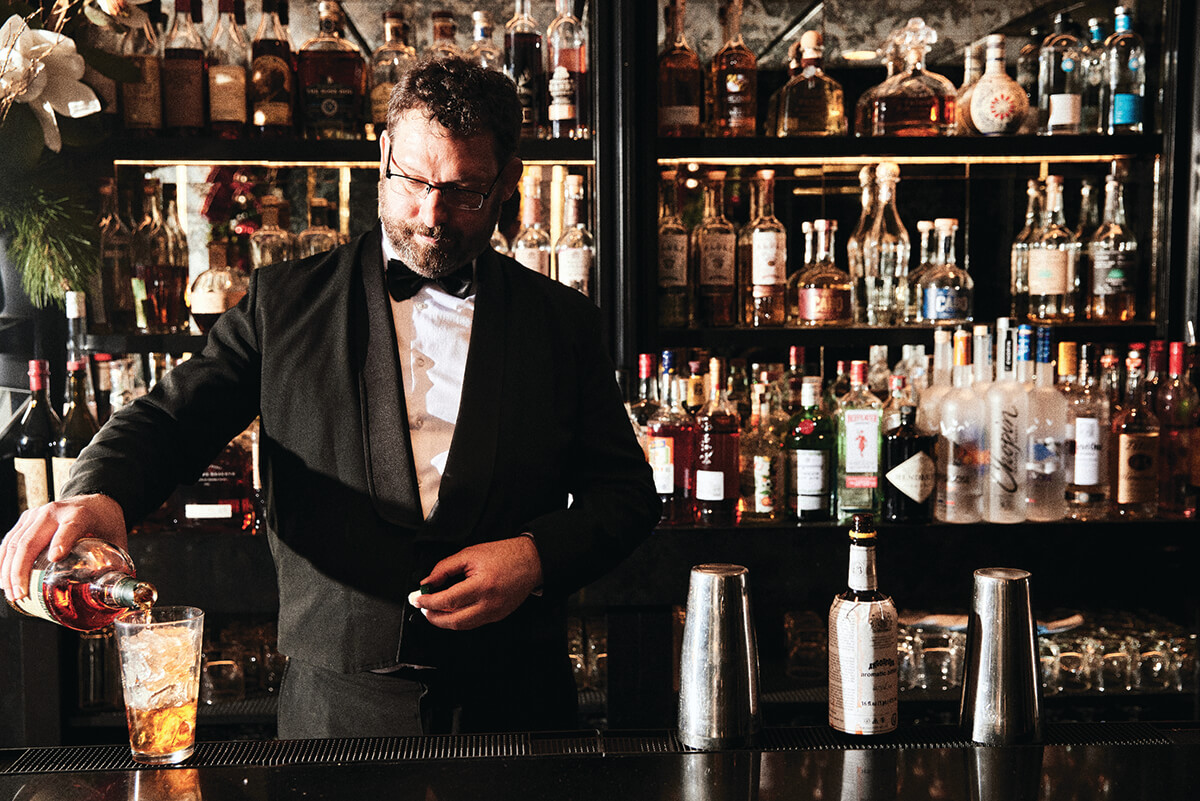
Dan Burks
Over the course of his dozen years behind the bar at The Prime Rib, one of Baltimore’s most venerable steakhouses, Dan Burks has developed a somewhat simple philosophy of bartending.
“The customers that come in are generally nice folks,” he says. “A lot of them have been coming in for years and years and we know them, and we like them. It’s easy to give good service to people that you like.”
Burks, 47, has been doing just that since he started bartending in the late ’90s on the Eastern Shore. A music performance major in college, he had a feeling that he would gravitate to the hospitality industry. (“With that degree, you’ve got to eat, sleep, and breathe music,” he says.)
When he found his way to The Prime Rib, he knew he was home.
“I’ve had other jobs here and there, but at The Prime Rib it’s not like we’re slinging beers and shots to a rowdy crowd that is out partying,” he says. “It’s a lot of martinis, Manhattans, and Old-Fashioneds. Anything served in an up glass. I’ve made a million Cosmopolitans. We go through a lot of martini glasses.”
The art of being a bartender lies not just in mixing drinks. It’s also knowing how to interact with customers. At an upscale restaurant like The Prime Rib, that’s even more pivotal. The affable Burks has a natural rhythm and intuition that keeps the mood upbeat yet still gives customers space.
“The people that we know we talk to all the time. But with some folks, you have to gauge whether they’re doing something. Are they buried in their phone? But you get plenty of regulars that want to talk sports. Some folks want to talk politics. And some people you can see that they’re with friends and they’re just catching up and bullshitting.”
On a recent night, a customer paid Burks a compliment that stuck with him.
“We’ve been coming here for a long time,” the man said, “and while we love the food and the atmosphere, we come here for you.”
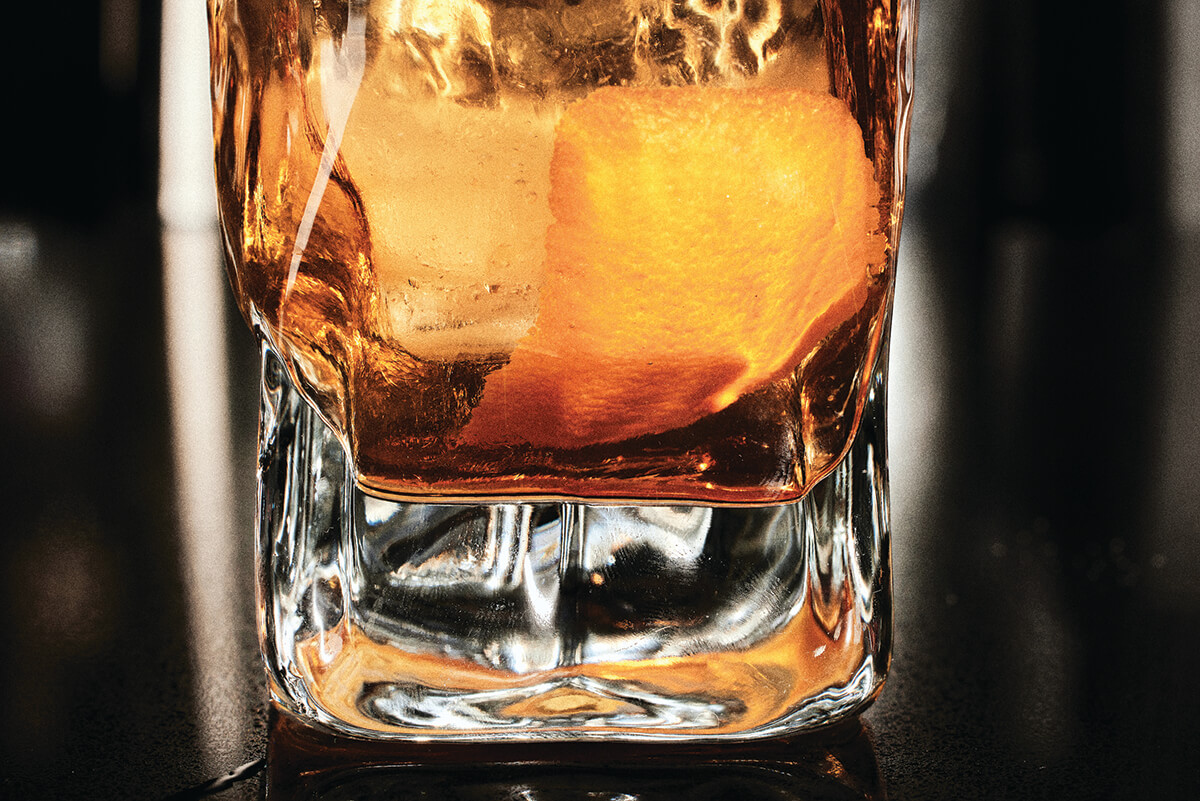
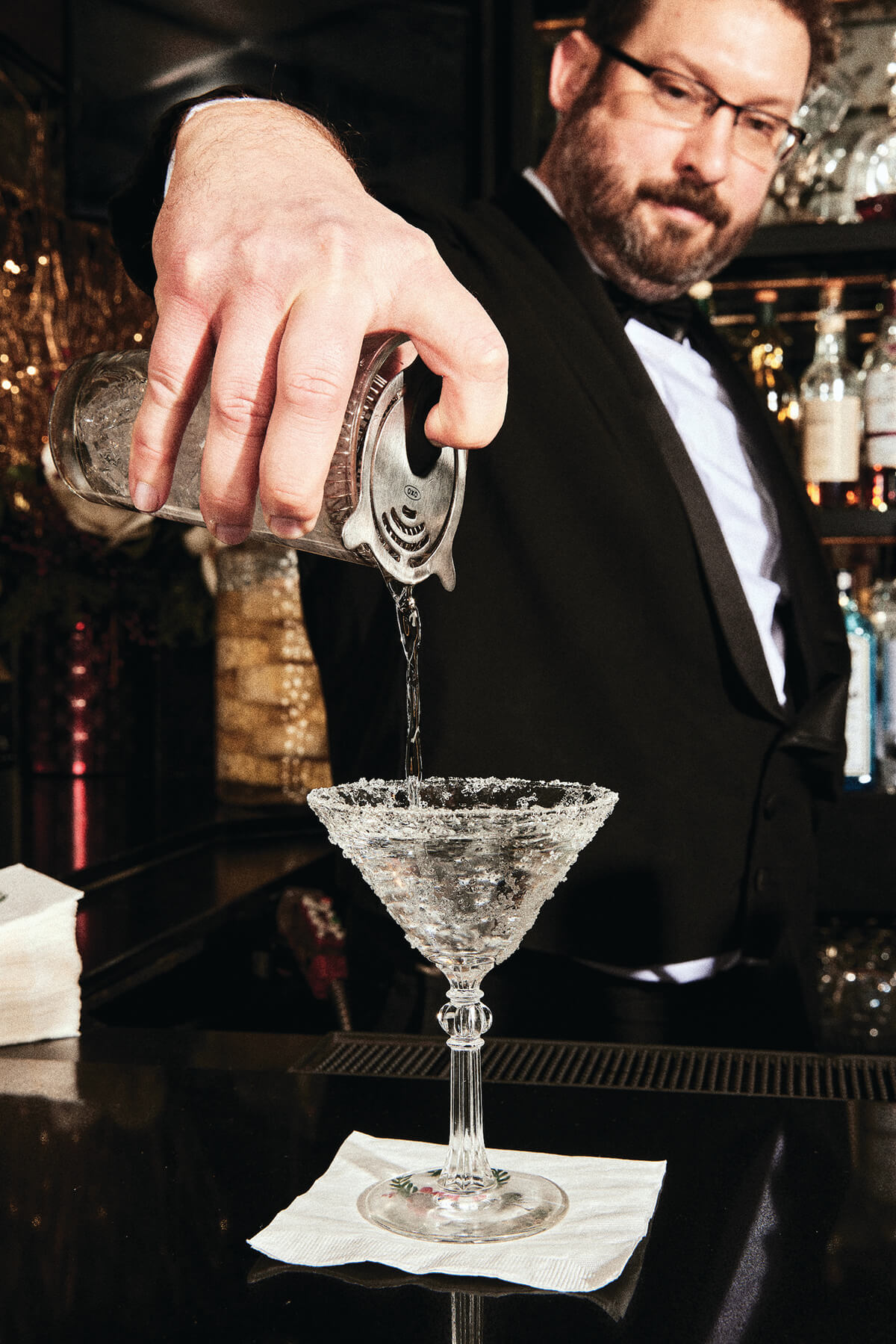
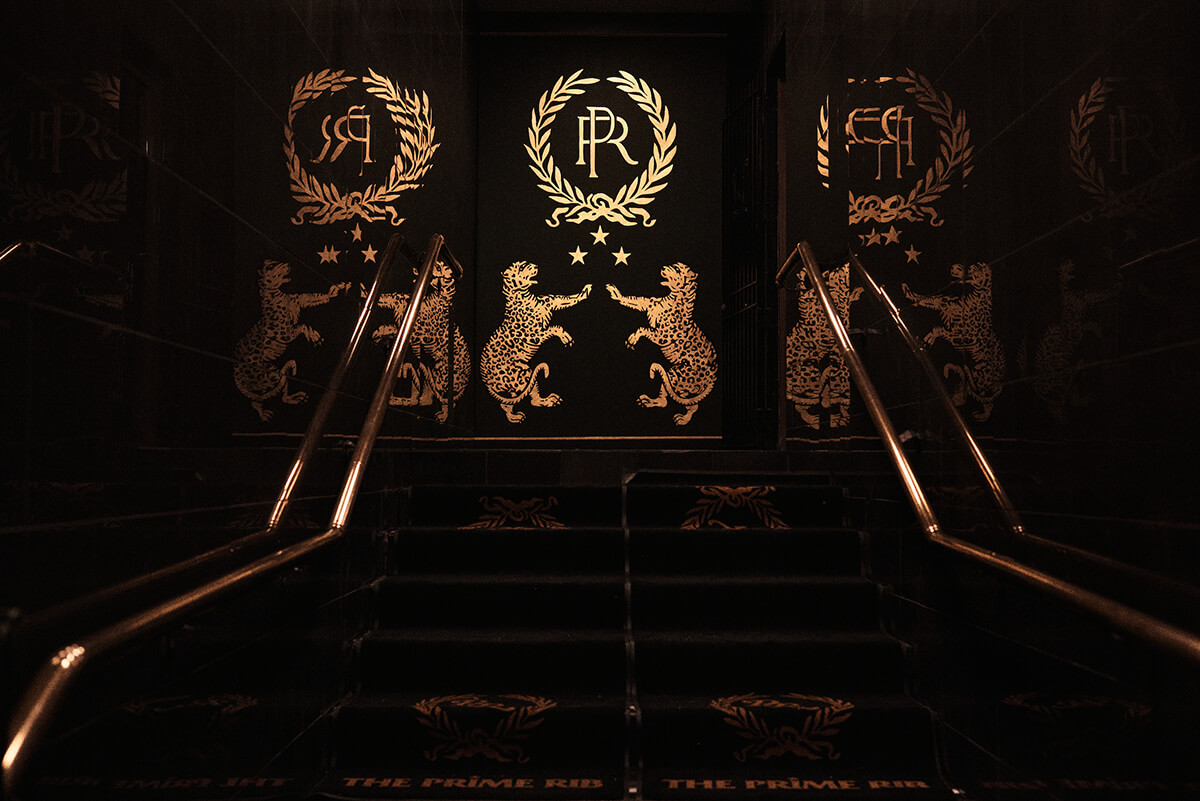
Amie Ward
Amie Ward loves bartending, and she’s devoted much of her professional life to making sure others in the industry have the tools to love it as much as she does. Ward is the executive director of Safe Bars, a nonprofit dedicated to making bars, restaurants, and other alcohol-serving spaces safe and welcoming for guests and staff alike.
She also owns and runs The Healthtender, a company that provides business owners and those on the frontlines of hospitality with the tools necessary to care for their bodies and minds.
“I started working in bars because those were the kind of people that I liked being around,” says Ward, 42, who has a master’s degree in kinesiology. “I liked talking to strangers for a living. I was taking care of myself, but I saw my peers were not. I created The Healthtender to teach people in the hospitality industry to eat better, take care of their bodies, and talk about the risks, because we have access to excess, we have weird hours, all that jazz.”
Ward started tending bar in 2009, and she says it took her a while to learn to counteract the physical and emotional challenges in the profession. Remembering to hydrate and eat while working a 10- to 12-hour shift (she always keeps nuts in her pockets for a quick snack), avoiding afterwork drinking sessions, stretching, resting—all of it is important.
“Bartenders and people in the industry are like endurance athletes, but we treat our bodies worse than any athlete ever would,” she says.
For Safe Bars, Ward’s work focuses on teaching the staff of any alcohol-serving establishment how to do bystander intervention, deescalation, and intervene in safe and non-confrontational ways to prevent sexual assault, sexual aggression, and other forms of violence.
“My world has mostly transitioned to advocacy work for the hospitality industry, doing a lot of health and wellness for people to make sure that they can stay in this business that we love for so long.”
But because she so treasures the work, Ward still steps behind the bar for the occasional shift at Southpaw in Fells Point.
“I love creating ridiculously over-the-top drinks and really special experiences for people,” she says. “I’m just one of those weirdos who loves the community and loves the job. I still have those moments when I want to be bartending. I fucking love it so much.”
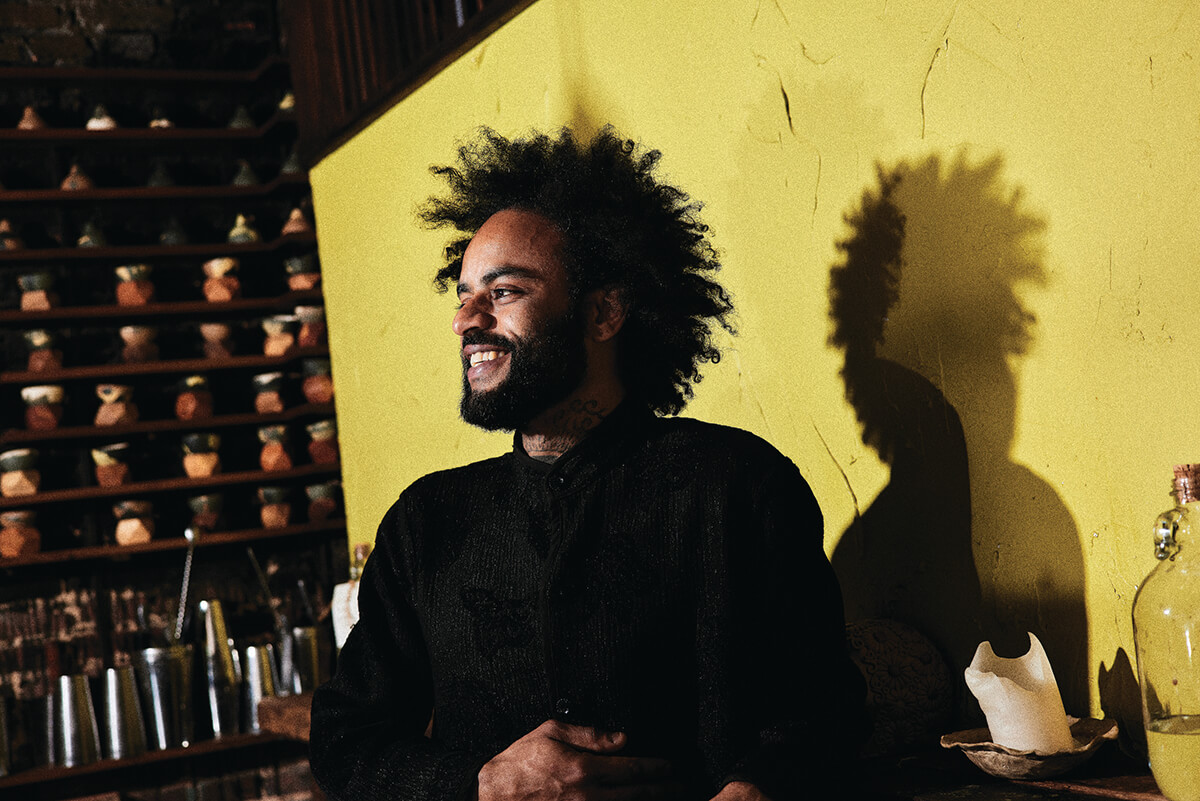
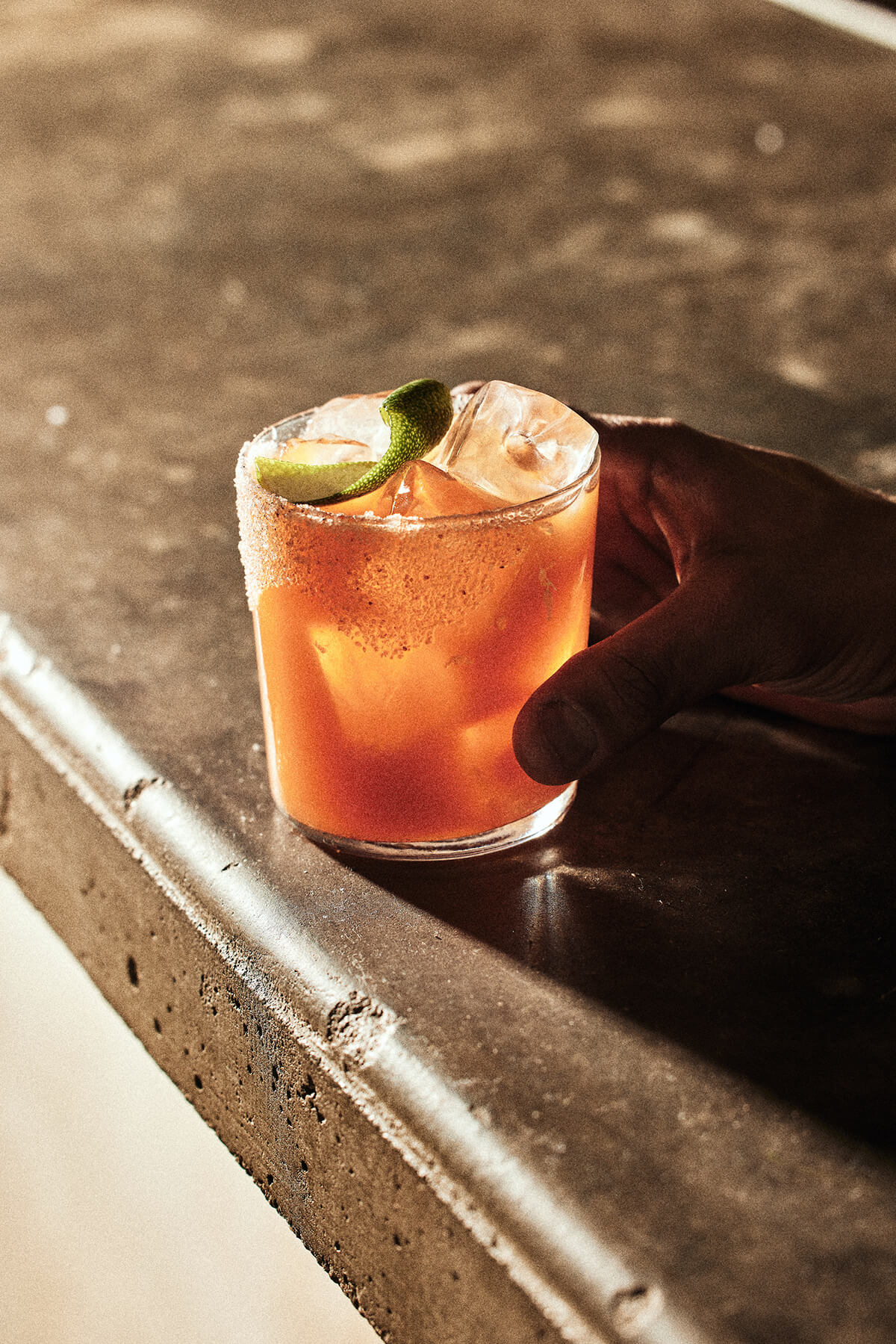
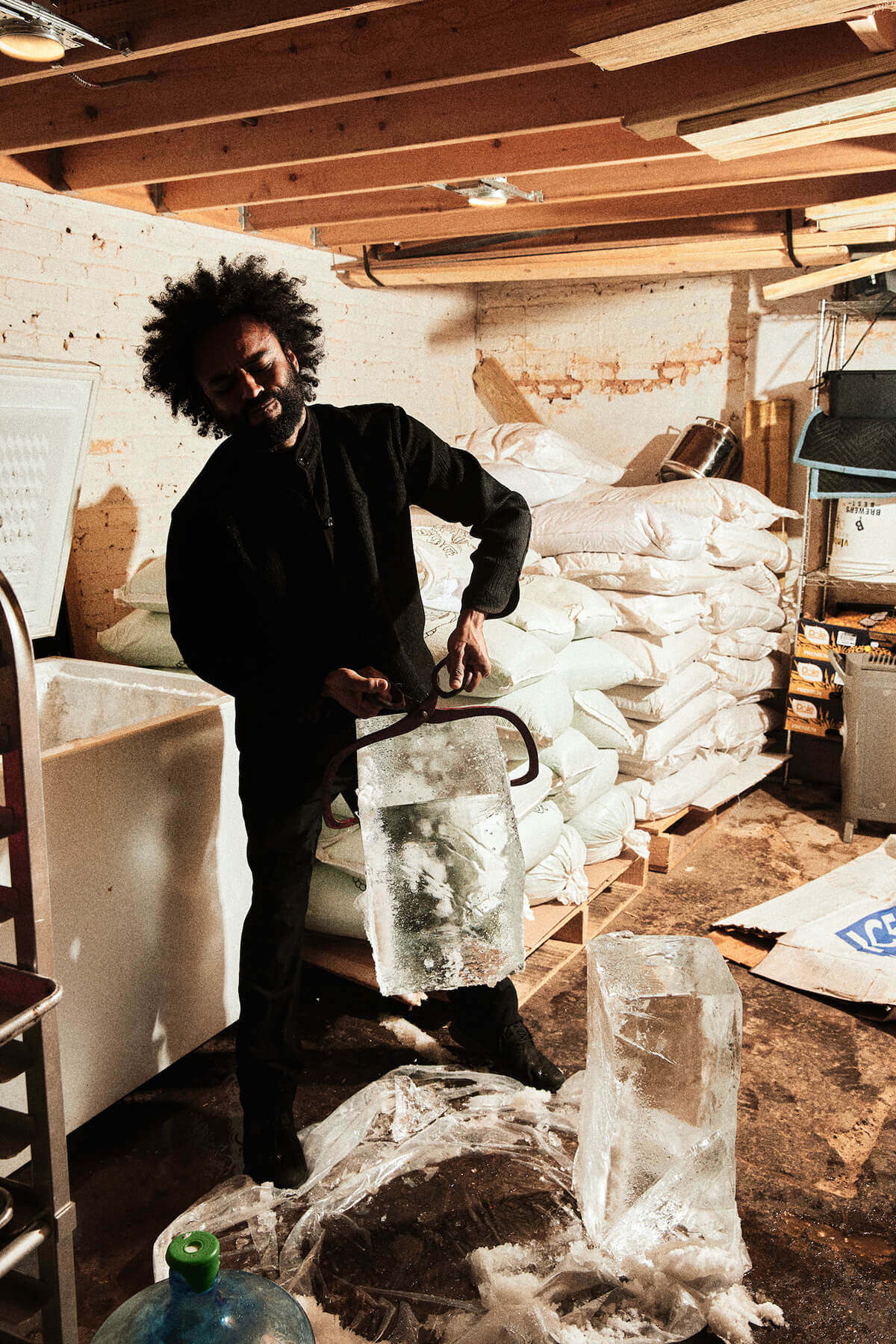
Andre Levon
Andre Levon, 37, has been tending bar for nearly half his life. A native of upstate New York, he started working at Turp’s in Mount Vernon before arriving at Clavel nine years ago. After all those years behind the bar, he still savors the relationships he builds with his customers.
“I find myself interacting with lots of different types of people,” he says. “You meet engineers and all these literate people. If anybody in the industry tells you that at this point that isn’t still a part of their job that they dig, they’re [over it] because it still is such a great thing.”
Levon has helped the popularity of the renowned Mexican restaurant’s cocktail list keep pace with its food. He leads mezcal tastings each Tuesday and, along with the team, plays a big role in curating the cocktail list. (He’s also part of the reason that the taqueria has been twice nominated for a James Beard Award in the Outstanding Bar category.)
He starts working on drinks three months prior to a menu change, a process that often includes traveling to Mexico, which is where he came up with the inspiration for the drink Tuba Por Favor. It’s based on the Filipino alcoholic beverage tubâ, which is made from the sap of palm trees and was introduced to Mexico centuries ago.
Levon’s cocktail combines tepache, coconut liqueur, lime juice, housemade kümel, and honey. It’s served shaken in a Hurricane glass.
“It’s a good amount of volume,” he says. “It’ll put a little buzz on but for the most part I designed it to be something that someone could enjoy for a while without getting too drunk.”
Although there’s no mezcal in that drink, it’s clear that the agave based liquor holds a treasured place in his heart.
“Mezcal is, of course, an agricultural product, but mezcal is a cultural product as well,” he says. “We have Mexico so close. We’re on the same continent, you know? And it is so vastly different from us. In a way, being able to drink mezcal connects me to this other culture in a really serious way in language, in art, and in cuisine.
“It doesn’t hurt that it’s delicious.”
